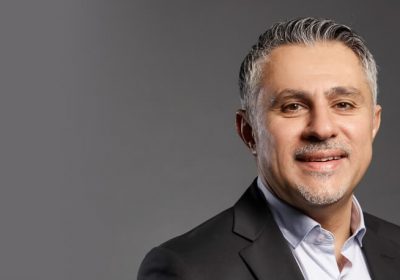
- Author: Lisa Sisson
- Posted: November 15, 2021
How CFOs Can Find Reward in Risk
Navigating your risk landscape is challenging and costly. It can feel overwhelming managing factors like theft, increased risk and threat vectors, not to mention compliance and remediation costs. But risk doesn’t exist in a silo. It is entirely interrelated with revenue and reputational issues. Together they are often referred to as the 3Rs.When risk is not managed, it can result in profit loss or reputational damage, impacting revenue.
Decisions relating to revenue can impact the organisational risk profile and can lead to reputational damage. Actions that create reputational damage, impact revenue and elevate the organisation’s risk profile. As overwhelming as managing risk may feel, the cost of inaction far outweighs the investment of the time, money and effort to get it right.
So where to start?
People are an organisations greatest asset and investment. When engaged and motivated they provide value and innovation to your organisation, which improves financial performance. Gallup shared “that customer engagement, sales and profitability are also associated with employee engagement, and those KPIs have serious financial impact.” When employees are not engaged, the reduced performance cost to the organisation is the equivalent of 18% of their annual salary.
Many executives’ associate disengagement only with productivity and don’t consider the risk exposure. When employees are disengaged, they are at best satisfied with the bare minimum level of productivity and focus, and we know that lack of attention leads to errors and ‘unintentional’ insider threats. Which is why the statistic in Gallup’s recent State of the Global Workplace: 2021 Report, that 80% of workers are not engaged or are actively disengaged, is incredibly concerning and the implications are costly.
Invest in your people
Investing in programs to support and maximise your people’s potential, along with their engagement, is money well spent. Some of the benefits Forbes share in their ‘ROI of Great Employ ee Experience’ highlighted tangible benefits like, greater productivity, improved customer satisfaction, and increased employee retention. Replacing an employee can cost an organisation anywhere from 30% for an entry-level salary to 400% of a senior executive’s salary. This is a significant financial burden.
Engagement strategies can activate an organisation’s greatest defence against risk, and also open unrealised opportunities, including:
Avoid losses due to theft, activity, or incident. Improve revenue through a workforce who are invested in the organisation’s success.
Reduce the risk of incidents that can lead to reputational damage. Build a reputation for trust.
Unlock the desire and capacity of your people to navigate risk to your organisation.
Getting the balance
Organisations are usually looking for ways to reduce costs while finding efficiencies, which makes systems and technologies appealing. But don’t lose sight of the value and opportunities that people hold. Relying heavily on systems and technology can bring short-term gains, but some can end up being band-aids – superficial solutions that not only impact negatively on employees and the organisation, but also result in unnecessary expenditure. Remember your people are at the heart of your business, so take a balanced approach that enables you to focus on your core business.
There is reward in the right type of effort
The evidence stacks up – whether it comes from the field of business strategy, financial risk or political science – if you maximise your workforce through effective employee engagement, you’ll improve the reputation and revenue of your business, create a workplace where people are proud to come to work, and reduce your organisational risk profile.
Reputation and revenue are closely interrelated. Revenue is the reward for achieving a solid reputation in the marketplace. You can also optimise profit by reducing losses from incidents like theft or costly exposure. This is important, as the financial implications of a risk incident can be considerable.
It starts with strong leadership. It is the ability to demonstrate the way forward, to inspire, motivate and effectively engage your people.
According to Harvard Business Review leadership analyst Roger Jones, ‘CEOs should actively encourage all team members to speak up without fear of consequences. That fosters honesty, debate and better decisions.’ This all leads to better performance outcomes for the organisation, including financial performance.
The business case and the rewards are there, but it requires a decision and effort. With the right approach, risk can be your pathway to opportunity, not to mention the ability to find cost reductions, a competitive advantage and be financially rewarded for your efforts.
It shouldn’t be that hard of a decision really.

About the Author – Lisa Sisson, author of ‘Risk Starts And Ends With People: Demystifying risk for executives and leaders’, is a sought-after speaker, mentor, consultant and author who helps executives and leaders who have become distracted and overwhelmed with ‘managing risk’, by demystifying and tackling risk within their organisation.
To learn more, visit www.unearth.com.au








